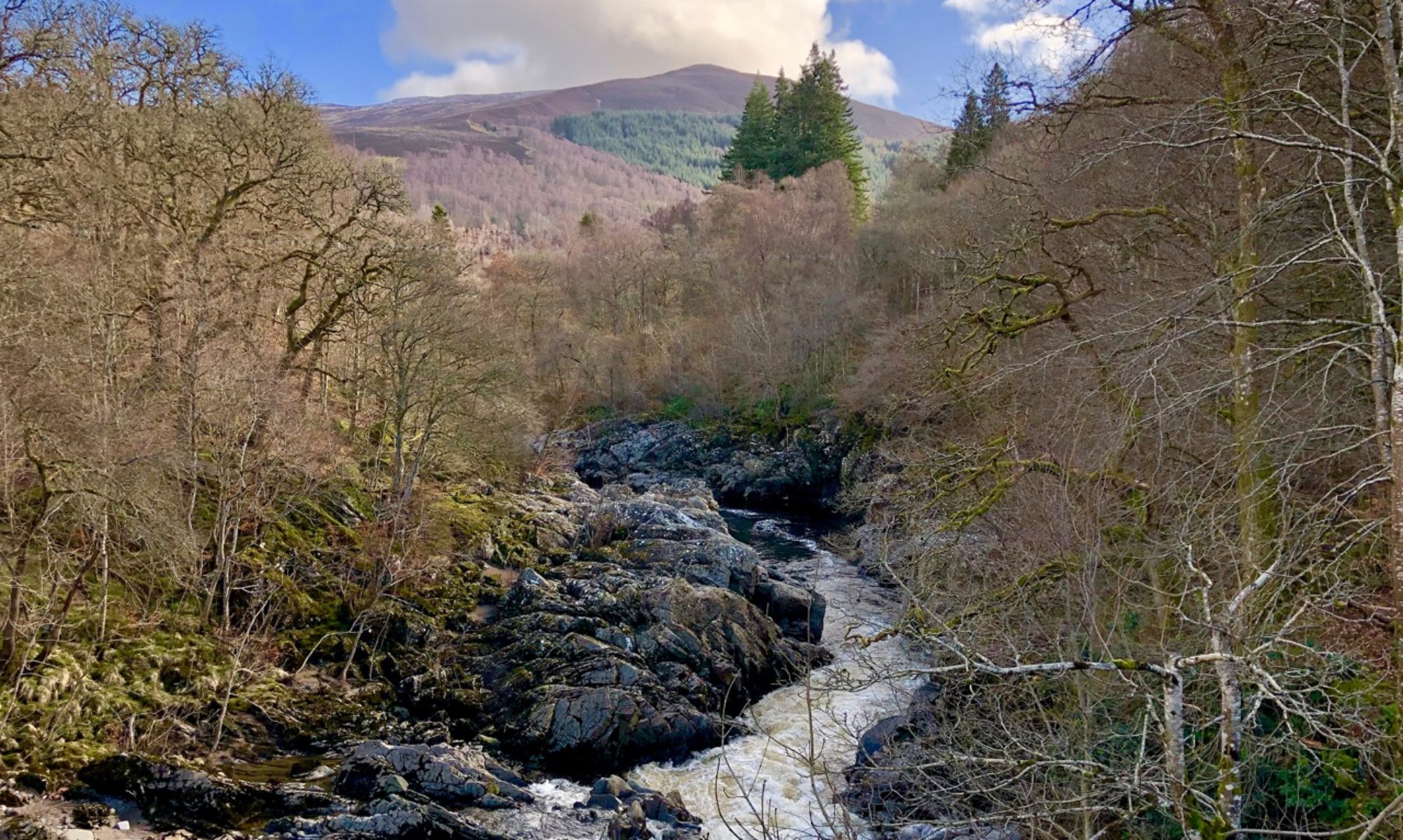Part Two: Slateford to Stockbridge
Starting at the Water of Leith Visitor Centre (NT 22110 70750), follow the river to pass under a large bridge. This is an aqueduct carrying the Union Canal, which connects Edinburgh with Falkirk. At Falkirk, the canal is connected with the Forth and Clyde Canal via the Falkirk Wheel. The towpaths of the two canals form the Forth and Clyde and Union Canal Towpath, one of Scotland’s longest walking trails.

After passing a wooden staircase that leads up to the canal, you might notice you’ve joined another of Scotland’s long distance trails: the John Muir Way. Muir was originally from Dunbar in East Lothian, but emigrated to America where he became a renowned environmentalist and a key player in the founding of the National Park system. Follow the path along the river and beneath the railway viaduct in front of you.

After passing a cemetery and a series of allotments, the river bends sharply to the right. Across the water stands HMP Edinburgh, known locally as Saughton Prison. The Scottish sculptor and artist Sir Eduardo Paolozzi, who was born and raised in Leith, was interned here for a number of months during the Second World War due to his Italian heritage.
You’ll soon reach Gorgie Road (NT 21695 71530), where you should cross and join a footpath on the opposite side. This runs roughly parallel to a small road for a short distance before passing behind some buildings, under a water pipe, and along the edge of a small playing field. When you meet the road next to a small footbridge, follow it into Saughton Park (NT 21860 71835). Stick to the edge of the car park to follow the river on your right, then join a footpath. As you continue through the park, you may wish to visit its fine walled garden.
The earliest mention of Saughton Park comes from the charters of King David I in 1128. Here it was known as Salectun – the “willowy farm” – which over the centuries has evolved into the name it bears today. In the late 1600s, a house was built in what is now the park. Saughtonhouse, as it became known, would serve as an asylum during the 19th Century. Much of the park as it is today was developed for the Scottish National Exhibition in 1908.

On the opposite side of the park, bear right when you reach a skate park and cross Balgreen Road. Here, a path enters the trees by the side of the road. This peaceful section of the walk passes under a railway bridge, shortly after which you’ll leave the John Muir Way at a footbridge (NT 22255 72590). Cross the river here and you’ll find yourself in the shadow of the home of Scottish rugby, Murrayfield stadium. Bear left once you’ve crossed the bridge. The path leads past the stadium and into Roseburn Park.

Continue to follow the river until the path bears right and approaches some residential streets. Take a left onto Roseburn Place, then a second left onto Roseburn Gardens. Cross the road at the crossing, then bear right, turning left onto Roseburn Cliff. A short distance along this street, you’ll find a path on your left with steps leading back down to the river.

Follow the path along the riverside, passing beneath the Coltbridge Viaduct. As you continue, keep your eyes peeled for the statue of a man in the river. This is one of six statues that form the artwork 6 TIMES by artist Antony Gormley. We’ll pass a few more of these as we approach Leith.

After crossing the river via a footbridge, you’ll approach Dean Village. At the time of writing, the path ahead has been closed for several years following a landslip and a diversion is in place. Cross the river here (NT 2378 7385) and follow Sunbury Mews to Belford Road, bearing left and down Hawthornbank Lane to reach the picture-postcard centre of Dean Village.
The most striking building in Dean Village is undoubtedly Well Court. This was built in the 1880s by Sir John Findlay, owner of the Scotsman newspaper. These tenements were intended to provide accommodation for workers in the village, and while conditions were relatively good there were strict rules to be followed: anyone who stayed out too late may have found themselves locked outside until morning.

Follow the cobbled street of Hawthorn Bank, then at a junction follow the sign for St Bernard’s Well. The path here passes under the tall arches of the Dean Bridge (NT 24280 73970), which was designed by the famed architect Thomas Telford to carry the road across the steep ravine. You’ll soon arrive at the well, easily recognisable with its statue of Hygeia, the Greek goddess of health.

St Bernard’s Well (NT 24451 74247) was named after St Bernard of Clairvaux, who is said to have spent time living in a cave nearby. It was built in 1789 on the site of a spring that was said to heal any ailment. Designed by the painter Alexander Nasmyth, the well was a popular tourist attraction – such was its fame that a reference to the well appears in Mary Shelly’s Frankenstein. Despite the water’s supposed healing qualities, you’d be best not to drink from it – its repugnant flavour was often commented on, and in the 1950s the well was closed after its water was found to be contaminated.
After the well, the path passes under the ornate St Bernard’s Bridge: the bridge dates to the early 19th Century, although the stairs may be a newer addition to allow easier access to St Bernard’s Well during its tourism boom. The path soon joins Saunders Street. Follow the road here to arrive at charming Stockbridge (NT 24635 74525).

You’ve now made it to Stockbridge, the end of Part Two of the walk. When you’re ready to continue on to Leith, you can move on on Part Three.

